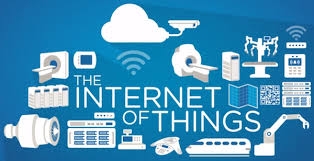
 “The Internet is running out of IP addresses.”
“The Internet is running out of IP addresses.”
This was the blunt assessment of my networking lab professor at the Rochester Institute of Technology ten years ago. It turns out that the largest network of all — the capital-I Internet — was never designed to accommodate the sheer volume of devices logging onto it. In the early 80s when the internet protocol was developed, no one considered an Internet of billions of devices for a network that was used only by higher education and government. They almost certainly didn’t conceive of a network that would require addresses for household appliances. Why would my thermostat, security system or bottle of prescription medication need to be connected to the Internet?
But my, those wheels of progress do turn quickly! The future has arrived, bringing with the “Internet of Things” — a universe of devices with all the software, sensors and network connections that promise to make our lives better, but what kind of experience is this providing? What can companies do to bridge gaps between these technologies and people who have yet to adopt them?
Surprise and delight with the power of data
“Knowledge is power” or so the saying goes. In the era of the Internet of Things — where devices collect data every hour of every day — that statement couldn’t be truer. One company that is uniquely positioned to rise to the challenge of understanding all this data is Google.
Ranked as number 15 on Tenet’s Top 100 Most Powerful Brands of 2015, Google is an old pro in the tech industry for gathering reams of information and turning it into something useful. Just look at their main product: their search engine dominates the market to such an extent that the company name is used as a verb. But now, Google has turned its attention outside of the World Wide Web.
With Google’s acquisition of Nest — known for its self-programmable thermostat — the search giant did more than buy a company that manufactures amazing temperature controls. They purchased permission to enter our homes and help themselves to the “data cookie jar”. Google can now, unintrusively, collect data on our behavior as we go about our daily business. Combined with the aforementioned expertise in understanding that data, this acquisition is a natural fit that has endless possibilities.
Think about self-monitored home security systems. Such systems could learn your daily movements, monitor your Google Calendar to determine when you’ll be away and connect to your Android device to send notifications in the event suspicious activity near your home is detected. Taking that to the next level, it’s easy to imagine a self-securing home, one that locks itself as you leave for work in the morning. Perhaps the system could unlock the door for your teenager who once again misplaced their key or open the garage in order to accept that Amazon Prime package. These are just some examples of how the Internet of Things can delight customers and, potentially, win over those reluctant to embrace it.
What about customers who are uncertain of allowing data to be gathered about them in order to make this magic happen?
Maintain trust through transparency
In the age of domestic surveillance, drones, and customer data breaches, the idea of an Internet of Things collecting personal data can feel intrusive for many late-adopters. Yes, these new technologies open up the possibilities for an improved life, but at what cost? Customers will — quite rightly — have questions they want answered, such as:
How much information is being collected?
What are they doing with the information?
Are they selling my personal data to others?
Is this all safe and secure?
These questions are real and need to be addressed so as to make it easy for customers to adopt new ways. The path that companies can take to get ahead of any negative perceptions is through the often neglected, but always recommended, principle of transparency.
Companies specializing in the Internet of Things must always be clear about what these technologies are doing for their customers, and what those customers are providing in exchange. By setting easy-to-understand expectations early, customers won’t be unpleasantly surprised later. Privacy and personal data are understandably, sensitive topics for consumers, so invest the time and effort to foster trust with your organization and your connected devices.
Trust is an important aspect of your communication, but it shouldn’t end there. An overall engagement strategy, or lack thereof, can have a lasting impact in the faith customers have in your company and its devices.
Source;Tenet Partners
Written by John Kusovski,Director Digital Marketing
